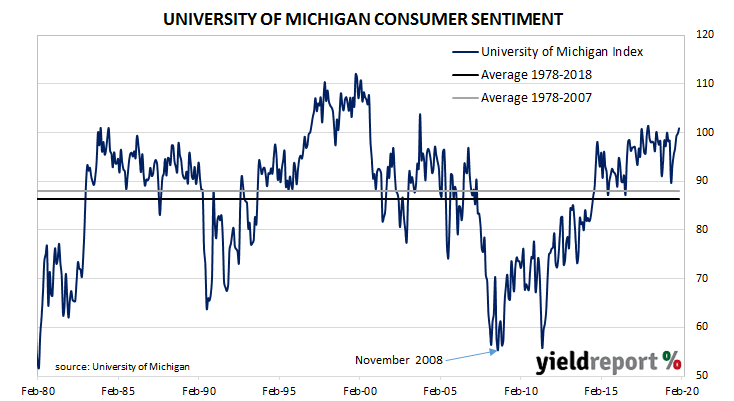US consumer confidence started 2019 at well-above-average levels in a longer-term context, although readings were markedly lower than those which had been typical of most of the previous year. Since then, surveys have generally indicated US households maintained historically-high levels of confidence except for two short-lived plunges; one at the very start of the year and one in August.
The latest survey conducted by the University of Michigan indicates the average confidence level of US households has resumed its recovery after falling precipitously in August 2019. The University’s preliminary reading from its Index of Consumer Sentiment increased from January’s final figure of 99.8 to 100.9 in February, over the consensus figure of 99.8.
The report came on the same day as industrial production and retail sales figures were released and bond yields fell a few basis points across the curve. By the close of trade, the 2-year Treasury yield was 2bps lower at 1.42% while 10-year and 30-year yields had lost 3bps each to 1.59% and 2.04% respectively.
In terms of US Fed policy, expectations of another rate change in the next few months remained soft. According to end-of-day prices of federal funds futures, the implied probability of a 25bps rate cut at the FOMC’s March meeting ticked up from 10% to 11%, while the likelihood of a rate cut by or at July’s meeting moved from 55% to 56%.

